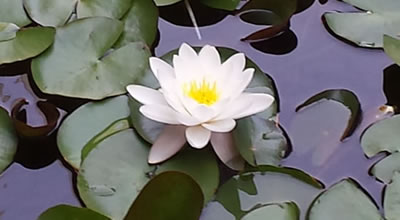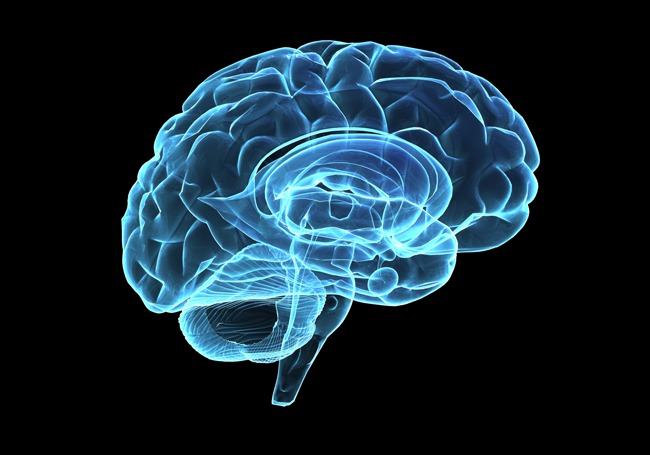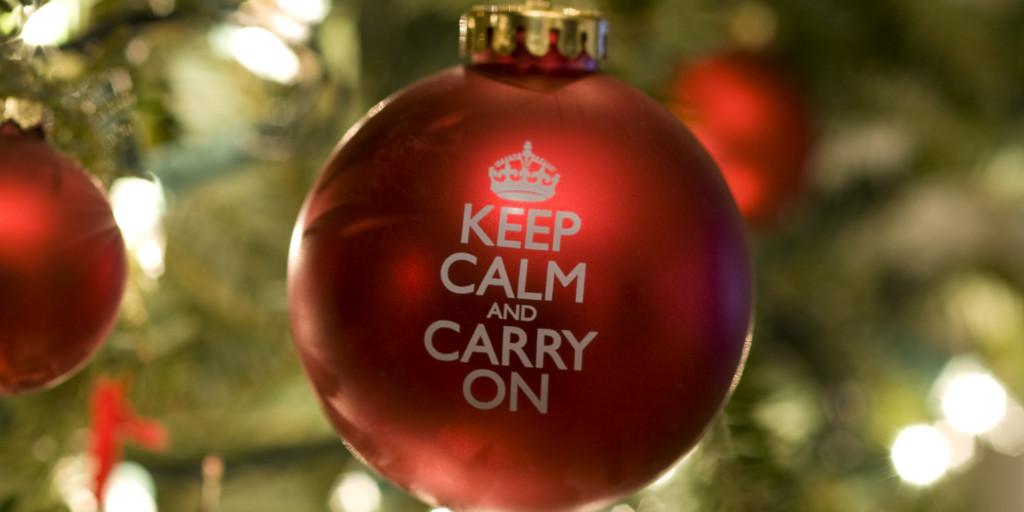Here’s a really good article from the Huffington Post about criteria for assessing a mindfulness teacher. I agree with all the author’s points and feel they are a good set of guidelines for determining whether or not to work with someone. One point I might add is whether or not the person attends regular intensive silent teacher-led retreats. Intensive practice is what really keeps mindfulness teachers learning and growing. I would say that at an absolute minimum, a teacher should attend at least one 7-day silent retreat a year.
http://www.huffingtonpost.com/deborah-schoeberlein/who-should-teach-mindfuln_b_7227540.html
Author Archives: Bill Scheinman
The Suffering Equation
There’s an old expression in mindfulness circles: pain is inevitable, but suffering is optional. Life is inherently stressful and challenging, and we sensitive human beings are affected in many ways in body and mind by the daily slings and arrows of existence. Because there is pain in life, the way we relate to the pain is crucial. The following formula can help us sort out the difference between pain and suffering:
S=PxR
Where suffering (S) equals Pain (P) times Resistance (R). Pain is inevitable, but when we resist pain in our lives we cause more pain, because we experience the anguish and fear that comes when we deny and avoid what’s true. When we recognize our pain and allow it to be there, without resistance, we open to the possibility of responding to our pain in ways that ultimately bring healing.
What we teach when we teach Mindfulness
This New York Times article about mindfulness at the World Economic Forum in Davos gives more proof of the ascent of mindfulness in our culture. One worry I have is whether mindfulness can truly be taught while being totally divorced from ethical principles or the spiritual context from which it developed. (That spiritual context is the journey to enlightenment of the man known as the Buddha more than 2600 years ago.) Without that context, there is a danger that teaching mindfulness becomes only about achieving better performance and enjoying life more – certainly worthy goals – rather than its deeper purpose: to radically change our relationship to our own lives, and to provide insight into suffering, the causes of suffering, the possibility of the end of suffering, and the ways needed to achieve that end. Those of us who teach non-sectarian forms of mindfulness – like MBSR – must walk a fine line between our fidelity to dharmic principles and the need to provide powerful practices in an accessible format to people who are not interested in “religion.” For me the dharma context is always foremost when I teach MBSR, which I do in a rigorously non-religious way. It’s my dharma practice which informs my own understanding of the causes of suffering and its release. Therefore, when my dharma practice is strong, so is my teaching. My fear is that many people are now teaching mindfulness who do not have a strong connection to practice. The risk is that much potential dharma teaching will get lost in translation or even ignored, short-changing the students in the process. This might then lead to the “dumbing down” of mindfulness. Many people have contacted me recently asking, “How do I become a mindfulness teacher?” My answer to them is to devote yourself to practice first. Then, from the depths of that practice, let teaching call your name.
Giving Space to the Joys and Sorrows of Life
Mindfulness is a simple yet profound way of being that essentially realigns our priorities.
We are told that we need to constantly be achieving things in order to be happy and living a successful life. And because of the non-stop busyness that drives so much of our behavior, our to-do lists, and progress in achieving our goals and plans, are what we focus on. As a result we ignore the very common signposts of human experience that tell us we are sentient beings living on this earth. The momentary joy of smelling a flower or eating a delicious meal or witnessing the smile of a child rush by us barely appreciated, or maybe completely missed, because our attention was occupied by thoughts of our next meeting or a project we have at work. Or, we miss the subtle clues inside our body that tell us that we are feeling sad, or anxious, or angry, or ill, and emotions seeking to be known and held in awareness are denied and distracted so that we don’t feel them. And deep intuitions that might guide us through life’s changes and point us to new ways of being are never given a chance to flower in the felt sense of the body because we ignore our bodies most of the time.

When we practice mindfulness, this all begins to change. Mindfulness is not a state of mind, or a technique, or a philosophy even. It is simply the act of giving space to what we experience as warm-blooded human beings. We give space to the old fears of not being good enough that have obsessed us all our lives, we give space to the anger that smolders inside when someone slights us, we give space to the old griefs that still have much to teach us. Giving space means letting the experience rise into consciousness, and holding it. Not changing it or fixing it, just holding it, letting it live in the light of awareness. Sometimes the pain and suffering we hold in awareness needs to be held for a long time – but eventually, what we hold in awareness will change. Its negative charge will lessen, or, as the Tibetans say, it will “self-liberate.” When the painful thought or emotion releases it will also give up its wisdom to us so that we will learn from it. Giving space to these all too human experiences allows us to metabolize the joys and sorrows of being alive. And what we cook in the cauldron of practice, given enough time, becomes the feast of our life.
Happiness is a Skill That We Can Learn
The pursuit of happiness is an idea deeply embedded in the American psyche, stretching back to the Declaration of Independence. But the idea of happiness is often distorted in our culture. We are told that happiness is about getting things. The right job, the nicest home, the best car, the perfect partner, etc. Yet lasting happiness isn’t about these things. It’s about how we experience our lives internally; it’s about how we respond to the physical sensations, thoughts, and emotions of our daily existence. Mindfulness practice points to the very real possibility that happiness is a skill that can be trained. Whether we train ourselves in an 8-week class in mindfulness-based stress reduction, or in our daily sitting practice, opening to the experience of the present moment – no matter what it contains – allows us to digest experiences while letting go of the stories we tell about them. This capacity to allow things to be as they are leads to more ease, peace, balance, well-being, and a sense of the richness of our lives – surely qualities that we can include in any definition of happiness. 
Why Mindfulness Will Survive the Backlash
An interesting piece from the Huffington Post. Apparently, 2015 is shaping up to be a year of backlash against mindfulness. But there’s no disputing the science.
“Despite the marketing of mindfulness as the latest hobby of the one percent, when it comes to the benefits of a meditation practice, the science is incontrovertible. A growing body of research unequivocally shows that a regular meditation practice is not only risk-free, but highly beneficial to the mind and body. Meditation has been shown to reduce symptoms of anxiety and depression, boost focus and improve sleep quality, among other benefits. And in just eight weeks, a meditation practice can create measurable brain changes in areas associated with memory, sense of self, empathy and stress.”
Full article is here.
Meditation Helps Preserve the Brain
“A study from UCLA found that long-term meditators had better-preserved brains than non-meditators as they aged. Participants who’d been meditating for an average of 20 years had more grey matter volume throughout the brain — although older meditators still had some volume loss compared to younger meditators, it wasn’t as pronounced as the non-meditators.”
-Forbes Magazine
The Breeze at Dawn
|
The breeze at dawn has secrets to tell you.
Don’t go back to sleep. You must ask for what you really want. Don’t go back to sleep. People are moving back and forth across the doorsill where the two worlds touch. The door is round and open. Don’t go back to sleep. -Rumi
|
Giving Yourself Space
Mindfulness is an act of self-care that gives us the space to feel what we are feeling and to know clearly how we are. The practice of mindfulness is simple, but it is far from easy. What we often discover when we pay attention in the present moment is our own pain and sadness and anxiety, our unhealthy habits of thinking and reacting, and our mind’s tendency to revert to auto-pilot mode. But as our practice deepens, we discover ways to be more fully present and awake for all our experiences, even the painful ones, in a way that puts us in alignment with life instead of in opposition to it. Even in the midst of a serious crisis, in the midst of heartbreak and fear, practicing mindfulness can help us live our life with more ease, flexibility, responsiveness, and wisdom.
Mindfulness on 60 Minutes
Anderson Cooper Investigates (and Practices) Mindfulness
Take Time to Be This Holiday Season
This is the time of the year when everything seems to get intensified. Our work schedules are usually extra busy with end of year or seasonal deadlines. Add to that all the events and pressures of the holiday season, whether it’s your office party or planning for the holiday dinner you committed to make or sending out cards or shopping for gifts. There’s a certain joyous frenzy to it all. It can be a fun time of year. But it’s just as likely to be a very stressful time of year when we find ourselves going through the motions of the season without any presence of mind, in a kind of dissociative trance. We become so wrapped up in doing things that we forget our being completely. We become completely unbalanced.
Paradoxically, this is a great time of year to just let yourself be. Taking some time each day to sit and breathe is critically important especially during high stress periods like the holidays. Even ten minutes a day of breathing can make a huge difference. Who has time for that? you might ask. How sad that we so often neglect to connect to ourselves. What does all the giving of the holiday season mean if you’re not able to give yourself the gift of your own attention? You’re not being selfish. You’re honoring your own mental and physical health by taking time out to breathe. To become still, silent, and simple. In that silence and stillness we can reflect on what’s important to us, about the kind of year we’ve had, about our successes and failures and our aspirations for next year. Even during a busy day you can remember to practice STOP whenever you feel you need it — just noticing your breath, your body sensations, and acknowledging whatever thoughts or emotions happen to be present, without needing to change how things are but simply opening to how things are.
So please, give yourself the greatest gift in the world this holiday season – the power of your own attention and self-care.
Please
Podcast: The Power of Retreat
A Nice Poem from Ed Brown
Ed Brown, No Measuring Up
Now I take the time to peel potatoes,
wash lettuce and boil beets,
to scrub floors, clean sinks, and empty trash.
Absorbed in the everyday,
I find time to unbind, unwind,
to invite the whole body, mind,
breath, thought, and wild impulse to join,
to bask in the task.
No time lost thinking that somewhere else is better.
No time lost imagining getting more elsewhere.
No way to tell this moment does not measure up.
Hand me the spatula: now is the time to taste what is.
8 Ways to Practice Mindfulness in Daily Life
- Remember to notice your breath throughout the day, as often as possible. If the breath feels tense, acknowledge it. The simple act of acknowledging often has a healing effect. If your breath is feeling stressed, chances are that you are too.
- Notice the touch points and felt sense of your body as often as you can. When your awareness is grounded in the body it is easier to rest in present-moment awareness and life is much easier as a result.
- Learn to acknowledge how things are right now. Practice self-compassion and do not judge yourself for feeling a certain way or for being imperfect.
- Be aware of the effect what you consume has on your stress level. Too much coffee or TV or E-mail can create a sense of being disembodied and cause stress.
- Use moments of down time – like walking down a hall to see a colleague or down the street to catch a bus – to cultivate present-moment awareness.
- Re-learn the art of doing one thing at a time. Think “single-tasking” instead of multi-tasking.
- Practice mindful eating. Enjoy the sensations of the food without watching TV, going online, texting, having a conversation, or reading. Just eat & know that you’re eating.
- When you get home from work, get out of your work clothes and into more comfortable clothing as soon as you can.
Podcast: Mindfulness & The Alchemy of Awareness

Mindfulness Raisin Exercise
Demystifying Mindfulness: The Raisin Exercise
Take a raisin and look at it closely like you’ve never seen one before. Notice its shape, texture, color, smell, sound, the light reflecting off it, the feel of it as you roll it between your fingers. Take your time. Linger as you inspect the raisin. Reflect on all the conditions that brought you this raisin today – conditions of light and water and earth and time, of all the people that touched it in some way. Then, place it in your mouth, feel it rest on your tongue for a moment, then slowly, with awareness, chew, notice, taste. Savor.
